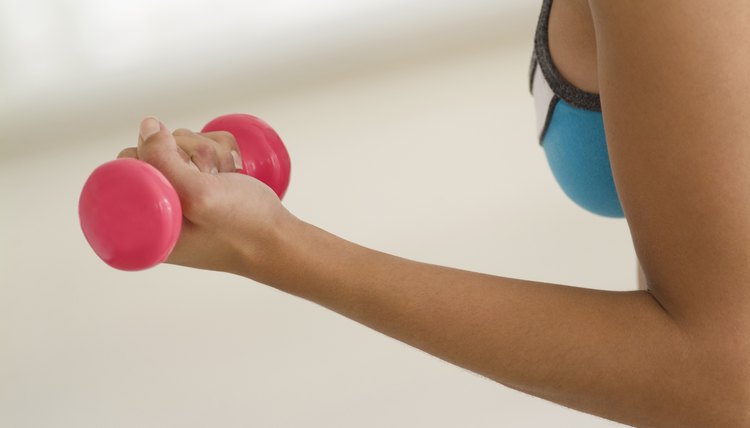What does fact checked mean?
At SportsRec, we strive to deliver objective content that is accurate and up-to-date. Our team periodically reviews articles in order to ensure content quality. The sources cited below consist of evidence from peer-reviewed journals, prominent medical organizations, academic associations, and government data.
- The American Journal of Sports Medicine: Sports Participation After Shoulder Replacement Surgery
- The American Journal of Sports Medicine: Sports Participation After Shoulder Replacement Surgery
- MedlinePlus: Using Your Shoulder After Replacement Surgery
- The Journal of Bone and Joint Surgery: Humeral Hemiarthroplasty With Biologic Resurfacing of the Glenoid for Glenohumeral Arthritis
- The Journal of Bone and Joint Surgery: Humeral Hemiarthroplasty With Biologic Resurfacing of the Glenoid for Glenohumeral Arthritis
The information contained on this site is for informational purposes only, and should not be used as a substitute for the advice of a professional health care provider. Please check with the appropriate physician regarding health questions and concerns. Although we strive to deliver accurate and up-to-date information, no guarantee to that effect is made.
Weightlifting After Shoulder Replacement

Although replacing your shoulder does not necessarily mean that you need to abstain from all forms of physical exercise, it does mean that your chances of engaging in heavy-duty weightlifting again are slim. Furthermore, while shoulder replacement may provide you with immense pain relief, failure to take extreme caution after surgery may very well lessen its benefits. Consult your doctor about exercising after shoulder replacement surgery.
Significance
While you may be able to return to sports after shoulder replacement, it is not advisable to participate in activities that require repetitive motion under load, especially weightlifting. Nonetheless, depending on your age, the extent of damage and subsequent surgery, there may be a slight possibility of continuing with your weightlifting regimen.
Function
Two forms of shoulder replacement are most common. Total shoulder replacement is suitable for bone-on-bone osteoarthritis and intact rotator cuff tendons. Reverse total shoulder replacement is administered to patients who have completely torn their rotator cuffs, suffer from severe arthritis or have had a previous replacement that failed. Total shoulder replacement involves the installation of a polished metal ball attached to a stem and a plastic socket. In reverse total shoulder replacement, the ball and socket are swapped around, thus allowing the patient to use the deltoid muscle instead of the rotator cuff to lift the arm. While both surgeries may provide significant pain relief and improve quality of life, activities such as weightlifting pose great risks.
Considerations
Experts at the Carrell Clinic investigated whether biologic glenoid resurfacing -- an alternative to shoulder replacement that provides similar pain relief -- may allow patients to return to weightlifting. Their 15-year study followed patients who were managed with biologic glenoid resurfacing during which glenoid erosion was minimal and actually stabilized after five years. Many of these individuals resumed weightlifting. However, this type of surgery is limited to ideal candidates who are usually relatively young. Individuals over 50 years of age may need to pursue other avenues.
Warning
It is vital that you participate in a rehabilitation program, which may last up to six weeks, before you attempt normal activities because premature overuse may lead to restriction of motion. If you do resume heavy weightlifting after shoulder replacement, you may shorten the lifespan of your implant, loosen its joint and cause additional problems later on.
Prevention/Solution
Heavy weightlifting has actually produced a new development of shoulder injuries in lifters, according to Dr. Bruce Wolock of Towson Orthopeadic Associates. Many of these individuals require shoulder replacement. “Keep weight low, and increase the sets and repetitions,” he cautions. If you're not a seasoned professional, do not lift more than 100 lbs. and avoid lifting to failure.
Explore In Depth
References
- The American Journal of Sports Medicine: Sports Participation After Shoulder Replacement Surgery
- American Academy of Orthopaedic Surgeons: Shoulder Joint Replacement
- MedlinePlus: Using Your Shoulder After Replacement Surgery
- The Journal of Bone and Joint Surgery: Humeral Hemiarthroplasty With Biologic Resurfacing of the Glenoid for Glenohumeral Arthritis
- Barco R, Savvidou OD, Sperling JW, Sanchez-sotelo J, Cofield RH. Complications in reverse shoulder arthroplasty. EFORT Open Rev. 2016;1(3):72-80. doi:10.1302/2058-5241.1.160003
- American Academy of Orthopaedic Surgeons. Reverse total shoulder replacement. Updated March 2017.
- Johns Hopkins Medicine. Reverse total shoulder replacement.
Writer Bio
A health and fitness freelance journalist, Kieran O'Connor began writing professionally in 2007, and has since been published in numerous magazines, including "Men's Health" and "House & Garden." He received his Bachelor of Arts degree in philosophy and English literature from the University of Cape Town in 2006.
